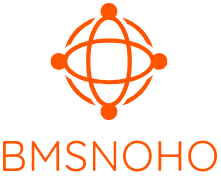Table of Contents
ToggleIn a world where chaos reigns supreme, finding a structured daily flow can feel like searching for a unicorn in a haystack. Yet, the secret to transforming daily madness into a symphony of productivity lies in crafting a routine that works like clockwork. Imagine breezing through your day with purpose, where every task feels less like a chore and more like a well-choreographed dance.
Understanding Structured Daily Flow
Structured daily flow refers to the organization of tasks and activities to enhance overall efficiency. Establishing a clear framework helps individuals prioritize their responsibilities and manage time effectively.
Definition and Importance
Structured daily flow involves creating a predictable routine that sets the tone for each day. This approach aids in minimizing distractions and focusing on essential tasks. Knowing what to expect each day reduces stress, allowing for improved decision-making. It also fosters a sense of control and accomplishment, vital for personal and professional growth.
Benefits for Productivity
Enhanced productivity stems from a well-structured daily flow. Routine enables individuals to allocate specific time slots for focused work, leading to higher output. Consistency in daily activities strengthens habits, making tasks feel less burdensome. Prioritizing essential tasks first creates momentum, enabling rapid progress throughout the day. Increases in efficiency can also result from reduced procrastination, allowing for timely completion of goals.
Key Elements of Structured Daily Flow
Structured daily flow involves core elements that foster efficiency and productivity. Two critical components are time management techniques and prioritization strategies.
Time Management Techniques
Effective time management techniques boost productivity. Utilizing tools like planners, timers, and digital calendars helps individuals schedule their tasks. The Pomodoro Technique involves working in focused bursts, typically 25 minutes, followed by short breaks. This method keeps energy levels high and reduces mental fatigue. Another useful approach includes the batching of similar tasks, which minimizes context switching and enhances concentration. Utilizing these techniques cultivates a disciplined approach to managing tasks throughout the day.
Prioritization Strategies
Prioritization strategies ensure that essential tasks take precedence. One common method is the Eisenhower Matrix, which divides tasks into four quadrants based on urgency and importance. This strategy allows individuals to focus on what truly matters. Another approach is the ABCDE method, where tasks are categorized based on their significance. This clear ranking assists in making informed decisions. Incorporating these strategies into daily routines can streamline workflows, reduce overwhelm, and enhance overall productivity.
Implementing Structured Daily Flow
Creating a structured daily flow requires intentional planning and consistent execution. Individuals can significantly improve their productivity and reduce stress by establishing a daily routine.
Creating a Daily Routine
Establishing a daily routine serves as the backbone of a structured day. Start by outlining specific tasks and assigning them to dedicated time slots. Set consistent wake-up and sleep times to regulate the body’s internal clock. Include breaks to maintain mental clarity and energy. Allocate time for essential activities, like exercise or meals, to foster physical and mental well-being. Prioritizing tasks ensures that important responsibilities receive the attention they need. Utilize the Eisenhower Matrix to distinguish between urgent and non-urgent tasks, enhancing focus on what truly matters. This structured approach leads to improved time management and reduces the likelihood of procrastination.
Tools and Resources for Success
Leveraging tools and resources streamlines the implementation of structured daily flow. Planners and digital calendars help track tasks and deadlines, ensuring nothing slips through the cracks. Timers can enhance focus, particularly when employing techniques like Pomodoro. Task batching aids in managing similar activities, boosting efficiency. Mobile apps that offer reminders can keep individuals accountable. The ABCDE method helps prioritize tasks, guiding daily workflows more effectively. Utilizing these resources not only enhances productivity but also fosters a sense of control over daily schedules.
Challenges and Solutions
Establishing a structured daily flow poses various challenges. Recognizing and addressing these obstacles can lead to smoother routines.
Common Obstacles
Many individuals face time-related issues that disrupt their daily flow. Inconsistent wake-up times can lead to late starts, making it difficult to complete tasks. Unexpected distractions often derail focus, hindering overall productivity. Additionally, unclear priorities create chaos that prevents effective task management. Others struggle with procrastination, which results in tasks piling up and deadlines being missed. Lack of energy can further impede motivation, making daily routines feel overwhelming.
Overcoming Resistance to Change
Resistance to change commonly arises when trying to implement a structured daily flow. Many individuals hesitate to leave their comfort zones, fearing an adjustment period. Setting small, achievable goals can help ease this transition. Gradually incorporating new habits fosters a sense of accomplishment. Utilizing the Eisenhower Matrix aids in identifying urgent tasks and prioritizing effectively. Emphasizing the benefits, such as reduced stress and greater control, can motivate individuals to embrace new routines. Regular reflection on progress enhances commitment and reinforces the positive changes made.
Establishing a structured daily flow can significantly enhance productivity and reduce stress. By prioritizing tasks and implementing effective time management techniques, individuals can regain control over their daily schedules. The journey toward a more organized routine may come with challenges, but the rewards of improved focus and efficiency are worth the effort. With consistent planning and the right tools, anyone can create a harmonious daily experience that fosters accomplishment and personal growth. Embracing this structured approach not only transforms how tasks are approached but also cultivates a sense of fulfillment in daily life.







